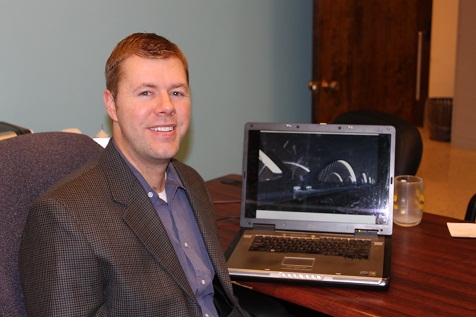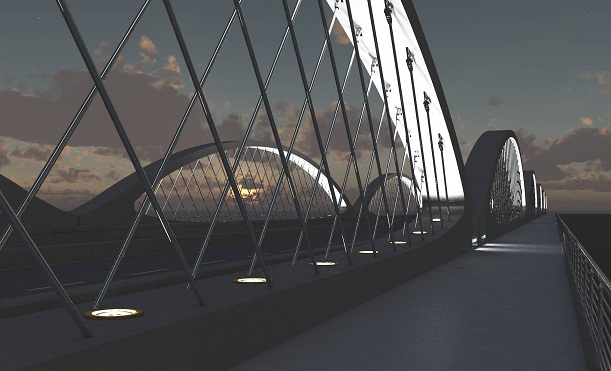OSU researcher plays role in innovative bridge construction
Wednesday, January 12, 2011

“The Texas Department of Transportation will integrate some of the concepts my research team has developed for a new method of rapid and economical bridge deck construction,” said Ley. “It uses precast or pre-manufactured concrete panels on 100 percent of the bridge deck to reduce cost, increase construction speed, and make the job safer for construction workers by replacing the typical wood and steel formwork.”
The project also uses pre-welded deformed wire mesh in place of tied rebar, another concept tested and validated by Ley’s research group at OSU. “Our research showed the use of wire mesh keeps crack sizes in bridge decks significantly smaller than conventional reinforcing,” said Ley, who has been contacted by other states as well as another country (Spain) to use the concept. The use of the wire mesh eases and speeds construction while extending the expected lifespan of a bridge.
The construction innovations were developed through two major research grants from the Texas Department of Transportation and the Oklahoma Transportation Center, totaling over $280,000, according to Ley, whose team has been testing various concepts for bridge construction since 2007.
“The cutting edge innovations introduced by Dr. Ley will improve the long term durability of the structure, while simplifying the bridge construction process,” said Ralph Browne, senior project engineer for KBR. “In my opinion, they also contributed to a bid by the contractor that was $3 million lower than the estimated cost of the structure.”
The bridge design for the Fort Worth project was led by Dean Van Landuyt, principle engineer, with the Texas Department of Transportation’s Bridge Division. It will include six precast concrete arch spans and will be used to widen and reconstruct the four-lane bridge with 10-foot sidewalks to serve bicycles and pedestrians. “To build a bridge of this stature is exciting for the Fort Worth community, and it will leave a lasting impression on the Fort Worth and Trinity River landscape,” said TxDOT Commissioner Bill Meadows.
Construction of the $22.7 million reinforced concrete “thru-arch” bridge is scheduled to start in early 2011, with estimated completion slated for fall 2012, before the holiday season. The project includes incentives for early completion.
For a more extensive look at the bridge design innovations, go to www.precastoverhang.com.

